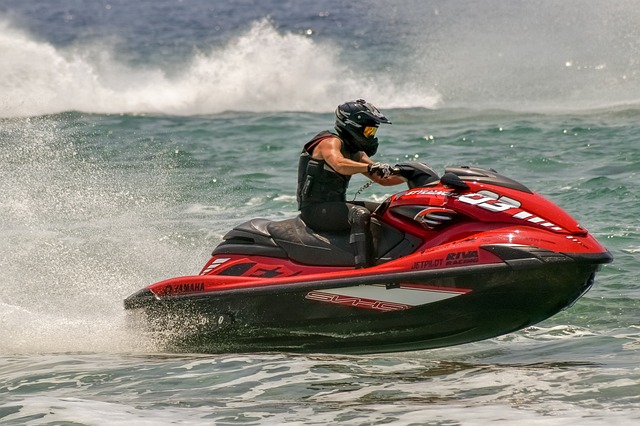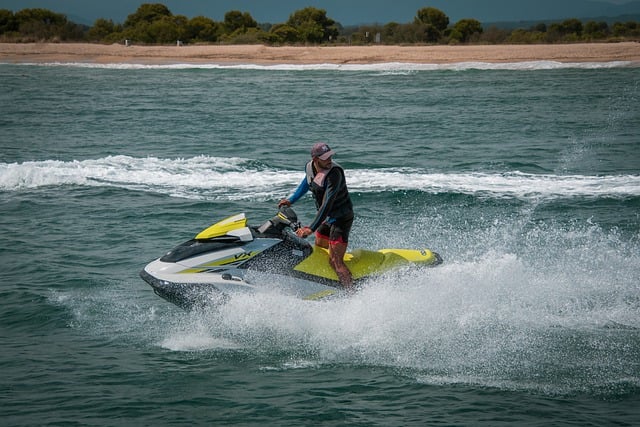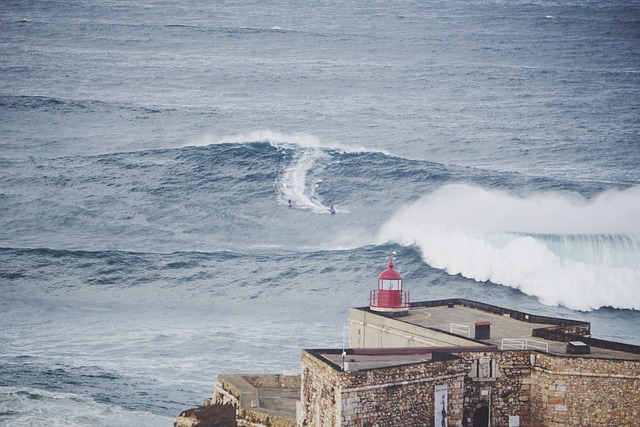Offshore Racing JBR (Jet Ski JBR) is an extreme sport pushing jet skis to their limits in open waters, requiring knowledge of rules, safety, navigation, and racing techniques. Since the 1960s, jet ski technology has evolved remarkably, with events like Jet Ski Battle Royale (JBR) driving innovation in powerful engines, advanced hydrodynamics, and sophisticated electronic systems. Modern JBR jet skis feature high-performance engines, lightweight composite hulls, precise suspension, and enhanced traction controls, prioritizing safety while achieving speeds over 70 mph. Key race model features include a powerful water jet pump, streamlined body, adjustable controls, advanced cooling, and state-of-the-art electronics for superior control and acceleration under extreme conditions.
“Unleash the thrill of offshore racing with a dive into the world of Jet Ski JBR. This beginner’s guide explores the exhilarating sport, offering insights into its rich history and cutting-edge technology. From the evolution of jet ski design to the crucial components that define race models, we demystify JBR competition. Discover essential strategies and skills to conquer the waves. Get ready to speed through the water with confidence—whether a novice or seasoned racer, this article promises an exciting journey into the heart of offshore jet ski races.”
- Understanding Offshore Racing JBR: A Beginner's Guide
- The Evolution of Jet Ski Technology for Racing
- Key Components and Design Features of JBR Race Models
- Strategies and Skills for Success in Offshore Jet Ski Races
Understanding Offshore Racing JBR: A Beginner's Guide

Offshore racing JBR, or Jet Ski JBR, is an exhilarating and specialized form of watercraft competition that takes place in open waters, typically far from shore. Unlike their on-water counterparts, jet skis designed for offshore racing are built with speed and endurance in mind, featuring advanced engine technologies and streamlined designs. These high-performance machines can reach astonishing speeds, making every race a heart-pounding spectacle.
Beginners interested in Offshore Racing JBR should start by understanding the basic rules and safety protocols. This includes learning about course markings, racing strategies, and the unique challenges of open water, such as wind and current effects. With proper training and experience, participants can develop skills to navigate through waves, maintain optimal speed, and confidently compete against other jet skis in this thrilling sport.
The Evolution of Jet Ski Technology for Racing

The evolution of jet ski technology has been a fascinating journey, especially for offshore racing enthusiasts. Jet skis, or Personal Water Craft (PWC), have come a long way since their early beginnings in the 1960s. Initially designed as recreational vehicles, they quickly found their place on the racetracks, captivating audiences with their speed and agility. The introduction of offshore racing events like JBR (Jet Ski Battle Royale) pushed manufacturers to innovate and refine their creations, resulting in more powerful engines, improved hydrodynamics, and advanced electronic systems.
Modern jet skis, such as those used in JBR competitions, are marvels of engineering. They boast high-performance engines that deliver incredible horsepower, enabling speeds exceeding 70 mph. Advanced materials like composite fiber reinforce the hulls, making them lighter yet stronger. Additionally, sophisticated suspension systems and advanced traction controls enhance cornering precision. These technological advancements not only ensure thrilling races but also contribute to safer riding experiences for racers and spectators alike in the dynamic world of offshore racing.
Key Components and Design Features of JBR Race Models

The Jet Ski JBR race models are meticulously engineered machines designed for speed and performance in competitive racing. Key components include a powerful water jet pump, capable of producing an impressive thrust to cut through waves and water resistance. The design features a streamlined body, often crafted from lightweight yet durable materials like fiberglass or carbon fiber, ensuring optimal hydrodynamics for reduced drag.
Unique design elements such as adjustable handlebars and footrests cater to the rider’s preference and ensure precision control during races. Advanced cooling systems are integrated to manage the intense heat generated by the engine, maintaining optimal performance even under extreme conditions. Additionally, these models often come equipped with state-of-the-art electronics for precise fuel injection and ignition timing, further enhancing acceleration and top speed.
Strategies and Skills for Success in Offshore Jet Ski Races

Offshore jet ski races, particularly in the JBR (Jet Ski Boat Race) category, demand a unique blend of strategies and skills to ensure success. Participants must possess an intimate understanding of their craft and the demanding aquatic environment. Mastering techniques such as watercraft handling, engine tuning, and fuel efficiency is paramount. Skilled riders anticipate challenges like waves, currents, and changing weather conditions, allowing them to make split-second adjustments for optimal performance.
Effective race strategies involve studying course layouts, identifying potential hazards, and developing efficient routes. Jet ski JBR competitors who can seamlessly integrate their skills with strategic planning often gain a significant advantage. Regular training in diverse conditions fosters adaptability, enabling riders to perform at their best during competitive events.
Offshore racing JBR has evolved into a thrilling and technologically advanced sport, attracting enthusiasts worldwide. By understanding the fundamentals outlined in this guide, exploring the innovative designs of JBR race models, and mastering effective strategies, beginners can embark on their journey to navigate the vibrant world of jet ski races. With the right knowledge and skills, folks can enhance their performance and leave their mark in this dynamic arena, making it a true testament to human ingenuity and precision engineering in the realm of jet skis.
